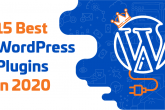Love them or hate them, third-party cookies are going away. Google plans to phase them out over the next two years, while Firefox and Safari have already begun to block them.
Since third-party cookies are out, it requires a revamp of your digital strategy to ensure that your company stays on track with its marketing KPIs. With programmatic email advertising, you’ll be ready for whatever tomorrow brings.
Table of Contents:
What are third-party cookies?
Cookies are tiny data files that often track users without their knowledge or consent. Growing concerns over privacy have let these major search engines to disable third-party cookie usage.
When a person visits a website, one might assume that any cookies that the site places on the user’s computer belong to the website owner. Third-party cookies, however, belong to another domain, not the site a user is browsing. For example, Google often generates third-party cookies on HGTV.com and other popular sites.
This arrangement is set up by the web server or a scripting program such as JavaScript, which creates the code.
The code, in turn, tracks information from the visitor’s session and provides it to the entity that created the third-party cookie. A user can find a cookie on a page, or the tracking code, by viewing their settings in their web browser.
Companies use these cookies to follow people across other websites they browse. This makes it easy to display ads and retarget messages.

What is the difference between third-party and first-party cookies?
First-Party Cookies
In contrast, first-party cookies exist to provide website visitors with a seamless user experience. Companies use them to remember a user’s language setting, username, password, shopping cart items, and other site preferences. They reside only on the site you are currently on. First-party cookies streamline a visitor’s experience, helping them get what they need quickly.
They also benefit the company’s marketing team. Unlike third-party cookies’ hard-sell messaging across domains, these cookies only provide analytics data. That helps the website create more focused messaging.
The tracking is made only for that particular interaction with the website. What is more important is that the tracking stops the moment the user leaves the website.
Third-Party Cookies
Companies use third-party cookies to monetize their website through ads targeted to the users’ interests. They also use them to track web visitors after they leave the company’s site by sending an automated request from the company’s web page to the ad company’s server.
Those annoying ads that seem to appear out of nowhere – suggesting that you buy that suit you’ve been eyeing or those reminders that you’ve left items in your online shopping cart – those are third-party cookies. To many users, these ads feel too intrusive.
With the advent of the General Data Protection Regulation (GDPR), EU’s strict privacy regulation, and the California Consumer Privacy Act of 2018 (CCPA) in the US, it’s essential for email publishers, website owners, and web browser companies to make privacy a priority.
Many people believe that third-party cookies because they follow them from site to site, do not provide them with adequate privacy.
However, many companies depend on third-party cookies to furnish them with alternate streams of income. Advertisers bid for space on their websites and other publications through programmatic advertising.
The data collected by third-party cookies allows these advertisers to place their ads where potential customers are browsing online.

How will programmatic advertising work without third-party cookies?
When one door closes, another opens, so goes the old saying. In this case, more than one new door opens up. In fact, in a cookie-free reality, programmatic native ads become more powerful.
First, ad tech companies will adapt their technology to obtain data through APIs instead of third-party cookies. These APIs link to ad campaign reports and click-through conversions to gather data about specific users.
Furthermore, Google looks to three new strategies to target ads: first-party data, interest-based data, and information based on the context in which users are using a particular site. These cookie-independent strategies function like API reports.
Even though gathering first-party data means that a company will have to do more work, the data is more reliable. People are voluntarily on the site and, by using the site, give consent to the use of their data.
Secondly, other first-party data involve exchanging information for a valuable item. This can be a newsletter subscription, an ebook, or a white paper.
Restricting primary content to those users who submit an email address or mobile phone number can also be an effective strategy for gathering data.
Additionally, with the rise of mobile as most users’ preferred channel, mobile ad IDs (MAIDs) look to be more effective at identifying users for retargeting and programmatic native ads.
And then there’s email.
For today’s leading-edge companies, it’s a two-pronged strategy to attract customers and earn an additional source of income in the process.

Email content marketing
Email newsletters provide your company with a forum in which you can prove your expertise in your field through helpful content.
If you’ve done your homework on your target audience, your marketing team will have dug deeply into Google and social media analytics to see their demographics, likes, preferences, and pain points.
Use these data as the basis for blogs and social media posts.
When you produce content that promises to inform your audience about topics they are interested in, you’ll be likely to attract them to your email list to get more of that information.
If your content helps them solve problems in life or in their business, you’ll soon build your reputation as a problem-solver.
As such, yours will be the company they’ll go to when they need your products. At the end of every article, include a short form on which readers can sign up to become email subscribers.
You can even use transactional emails to provide people who interact with your company online with short but useful blocks of information. For instance, on the order confirmation, you can add helpful hints on using the product they ordered.
On account creation emails, your team can include a short intro and a link to a blog post about a topic that will interest the recipient. Make sure that every post has an invitation to become an email newsletter subscriber.
When you focus on users, as opposed to invasive tracking cookies, you build trust. With today’s skeptical customers, that’s marketing gold.

Dynamic, native email ads
Email is one of your company’s fully owned channels, along with your website.
In addition to using content to woo customers long-term, your marketing team can place dynamic, native ads within your newsletters and other emails.
That’s the other prong of your email marketing strategy – and one that is extremely valuable.
Native ads appear as other articles about topics that will interest your recipients, so they don’t intrude upon your readers’ experience. In fact, they enhance it.
They can also provide your company with a new stream of income besides providing links to information that your recipients will want to read.
For that reason, placing dynamic ads within your newsletters and transactional emails is an excellent way to move your digital marketing forward in a post-cookie world.
The death of third-party cookies heralds a new era in digital marketing
Third-party cookies’ phaseout has turned out to be an evolutionary leap in digital marketing that can positively work to email publishers’ advantage.
Even now, browsers block 40 percent of publishers’ traffic, resulting in a 52 percent loss in programmatic ad revenue, according to noted business journalist Faisal Kalim. With ad blockers’ popularity rising, it’s clear that marketers need a new start.
That start begins with first-party data. The kind of data you get when you encourage your audience to become email newsletter subscribers.
As Kalim points out, the end of third-party cookies opens up “a huge opportunity to boost data-driven revenues and gain prominence in the advertising ecosystem.”
It’s all about trust and relationship-building.
We couldn’t agree more.

The data you collect through your website, social media, and email publications are incredibly valuable to advertisers.
Even more so now, since third-party cookies are all but dead. Your data is their only road to their own target customers.
The information you provide to your advertisers is more accurate than third-party data, according to Kalim.
Third-party data collectors are more concerned about their bottom line than accuracy.
As a result, a person’s data might have overlapped in age range, gender, income bracket, and other demographics.
First-party data come directly from your web visitors and email subscribers. They’re as accurate as those people’s answers.
A winning digital strategy for newsletter publishers
It’s the power of owned media. When you own and grow your audience, it puts you in the driver’s seat.
The ability to control your company’s own digital destiny extends to your social media channels as well.
It all rises and falls on your ability to leverage email, as a recent Deloitte report points out. As an owned channel, it gives you a direct line to your customers and prospects.
If you use your social channels as a conduit to funnel your followers into your email list, you have an edge over your competitors.
Once you have them on your subscribers’ list, you need to keep them there. So you should have relevant, personalized content through effective email campaigns.
When providing them with valuable and interesting information, you’ll increase audience engagement, and with it, revenue.
The best choice for monetizing emails: programmatic advertising
Programmatic native advertising adds value to the email subscribers’ experience.
With actionable pieces of content that helps them in their business or personal lives, these ads reach your audience with quality content.
The ads’ native format is inviting rather than intrusive. Advertisements appear as articles about topics that interest your readers.
For that reason, email provides an excellent return on your marketing investment.

When your subscribers feel appreciated, and the content they receive lives up to their expectations – and meets their needs – you’ll see better results than you did with third-party cookies.
All these changes put the marketer-customer relationship at the forefront when you create your email monetization strategy.
For that reason, programmatic email advertising will be the best option for you if you’re a marketer or publisher looking for great returns.
Choose the right partner for your email monetization strategy
When you have the right programmatic email monetization partner, you have a leg-up on success in today’s cookie-free digital environment. At inboxAds, we work with the programmatic advertising industry’s top ad providers to give your recipients a seamless, satisfying experience.
To take a closer look at how you can monetize email newsletters with inboxAds, get in touch with our team today.





